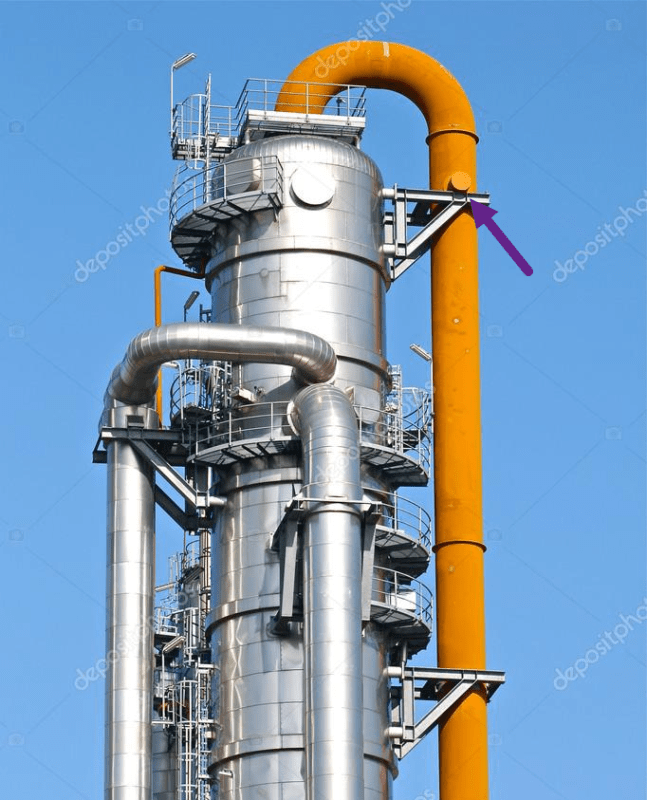If your situation is like the picture posted by XL83NL, then it's pretty typical (including the pipe trunnion at the top support). As a vessel designer I would have been asking from day one how the piping coming off the top nozzle would be supported. In this case RVAmeche is right that you need to forward the loads to the vessel manufacturer to check both local and global strength.
However your words were "... no actual relationship between the pipe and the pressure vessel ..." which makes me think this is a different situation. It sounds like a pipe that's running past or near a vessel, and piping has decided to use the vessel as a convenient support. If I'm wrong in my understanding then ignore my comments.
This sounds like it could be a very bad idea. Obviously a 20" vapour pipe and a 20" product pipe would be very different loadings on the vessel.
The vessel will (usually) grow when operating due to the temperature and pressure. This will push/pull on the piping changing the loads. If piping has modelled the vessel as a rigid anchor (as they often do) the loads used to check the support and vessel will be meaningless. If the piping loads are high the vessel could deflect enough to also require re-running the piping analysis.
I had a situation where I went back and forth with the piping designers for weeks and weeks. They'd send me loads on the 3 large pipe supports they wanted. I send them back how much my structure (not a pressure vessel but similar) moved. They re-run the loads and send them back to me. I'd re-run the deflections. Etc. etc. etc. They asked for spring constants at the 3 locations. I sent them numbers to show the deflections were very non-linear to the imposed loads and thus couldn't be simplified in that way. For unrelated reasons the Owner cancelled the project before we came to a resolution.
I also suspect it's standard practice in real life refineries, and that I don't want to see what's been hung off my pressure vessels in the decades after construction.

